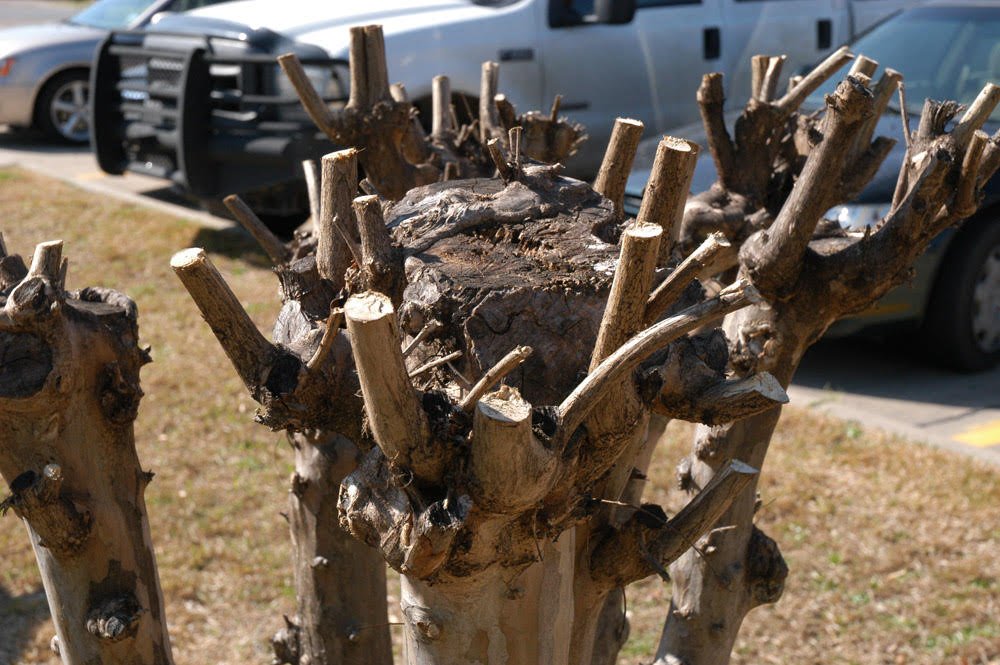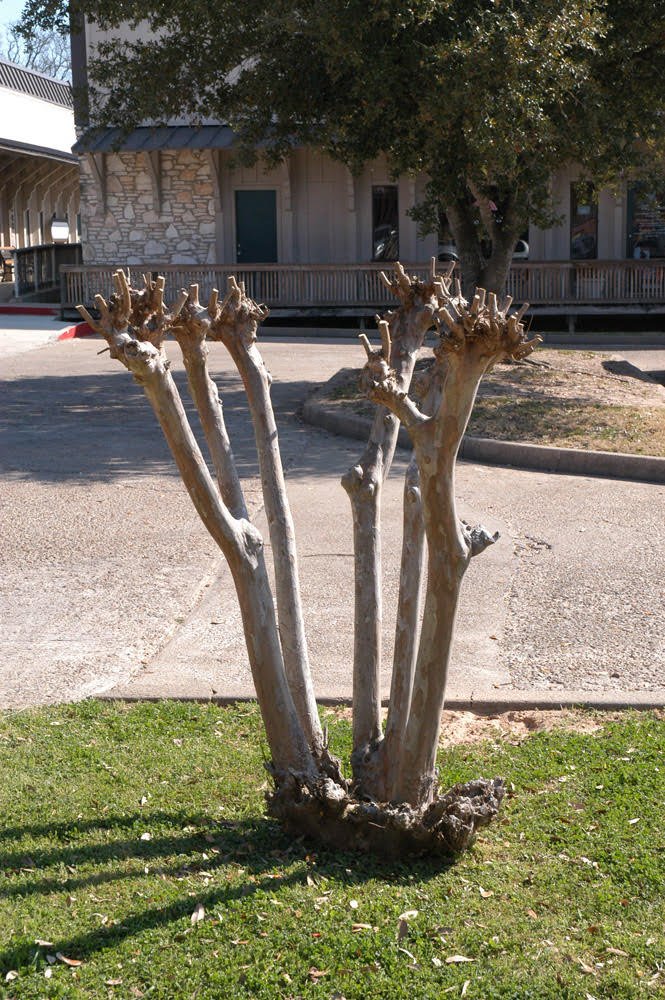The do’s and don’ts of crape myrtle pruning and maintenance
Addressing “crape murder” and topping trees
You may have noticed many homeowners cutting the tops off their crape myrtles in the landscape as we roll into winter. Unfortunately, this type of pruning has become increasingly common in the past decade or so. Often termed “crape murder”, topping crape myrtles does not benefit the tree. It is believed that it enhances flowering, but this is not the case.
Signs of rot from a top cut
Topping trees may:
Reduce overall vigor by taking away large amounts of woody tissue
Leave wounds open to fungal rots and diseases
Ruin the form of the tree, and promote weak branches
Lead to excessive suckering from below the cuts and at the base
Evidence of heavy suckering from the base
When should crape myrtles be pruned?
Due to the graceful form these trees take as they mature, pruning is usually performed to improve shape and open the canopy. However, beyond aesthetic reasons there are very few situations where one should be pruning:
Removal of dead and decaying limbs
Removal of crossing branches inside the tree
A limb may be damaged or is in a high activity location (such as a driveway or sidewalk)
A bark inclusion is forming (this can result in splitting and structural weakness)
Pruning should be performed in late winter into spring, this is not when companies usually perform tree pruning because fall is their slow season. Pruning in fall as the tree goes dormant may leave it vulnerable to pathogens and air entering the tree, as they cannot close wounds during dormancy. They begin new growth in spring, which can allow more rapid wound closure.
How do I prune crape myrtles properly?
All trees possess what is referred to as the branch protection zone, which is a special layer of tissue designed to seal off the branch should the tree decide to drop it naturally. This zone is marked outside the tree with two distinct areas:
The branch-bark ridge is found on the upper side of the limb, often appearing as a raised ring
The branch collar is a swelling found below the limb
A handy diagram showing what some of the cuts should look like
When removing a limb, a 45 degree angled cut should be performed following these two areas. Do not flush cut, as this will not be able to seal properly. A proper pruning saw is also important for a clean cut if it is available. Smaller limbs may be cut with hand pruners.
The angle of a proper cut




